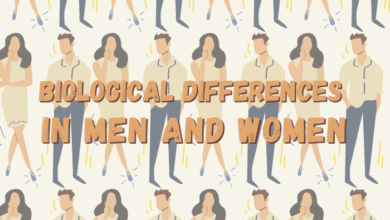
Rethinking a cure for diabetes, this exploration delves into the historical context, current treatments, and emerging research directions. From the earliest attempts to modern therapies, we examine the limitations of past approaches and the challenges of long-term management. The discussion also touches upon ethical considerations, potential future scenarios, and the importance of a holistic approach, including prevention and lifestyle modifications.
This journey aims to redefine our understanding of a cure, not just for blood glucose control, but for a healthier life for those affected.
This in-depth look at diabetes treatment examines everything from historical attempts at a cure to the latest research. It explores the limitations of current methods, highlighting potential new avenues of research and treatment, all with an eye toward a more holistic and potentially preventative approach. We’ll also analyze the ethical considerations that accompany these breakthroughs and contemplate the societal impact of a possible cure for diabetes.
Historical Context of Diabetes Cures
The quest to understand and treat diabetes has been a long and arduous journey, marked by periods of profound ignorance, ingenious experimentation, and ultimately, scientific breakthroughs. From ancient observations to modern molecular biology, the story of diabetes cures is a testament to human resilience and the relentless pursuit of knowledge. Early attempts at treatment, though often flawed by limited understanding, laid the groundwork for the sophisticated therapies we have today.Early treatments were largely based on observation and trial-and-error.
Understanding of the disease’s underlying mechanisms was rudimentary, and the focus was often on alleviating symptoms rather than addressing the root cause. However, these early attempts highlight the fundamental human desire to improve the lives of those suffering from this chronic condition. This exploration into the historical context provides valuable insights into the evolution of our understanding and treatment strategies for diabetes.
Early Theories and Treatments
Ancient civilizations, like the Egyptians and Greeks, recognized symptoms associated with what we now know as diabetes. However, their understanding was limited to the observable effects, and treatments were largely focused on dietary restrictions and lifestyle modifications. For example, in ancient Egypt, individuals exhibiting excessive urination were advised to avoid sweet foods. The concept of a specific disease was still far off.
Evolution of Understanding Diabetes
The development of our understanding of diabetes progressed significantly with the advent of more sophisticated scientific methods. Early clinical observations, coupled with advancements in chemistry and physiology, gradually revealed the metabolic dysfunction at the heart of the disease. The discovery of insulin in the early 20th century marked a monumental shift, providing a crucial link between the disease’s underlying mechanisms and effective treatment.
Significant Milestones and Failures
Early treatments for diabetes involved a variety of approaches, often with limited success. One prominent example is the use of various herbal remedies and dietary restrictions. While some of these remedies may have had minor positive effects, they were largely ineffective in managing the disease’s underlying metabolic disruption. A major failure was the lack of a clear understanding of the disease process, hindering the development of effective, targeted therapies.
Rethinking a cure for diabetes requires a multifaceted approach, considering the emotional toll of the disease. It’s interesting how, like acknowledging my own anxiety, it took a pandemic for me to finally admit I have anxiety – why that’s a good thing here. Ultimately, embracing the complexities of the human experience, both mental and physical, is key to finding effective and compassionate solutions to a cure for diabetes.
The search for a cure was hampered by a limited understanding of the disease’s underlying biological mechanisms.
Examples of Early Experimental Treatments
Early experiments often involved dietary interventions, focusing on controlling carbohydrate intake. These experiments often lacked rigorous scientific methodology, and their effectiveness was variable. Some early experimental treatments included using extracts from various plants believed to possess anti-diabetic properties. It is important to note that these approaches were not based on a strong scientific understanding of the disease and often had significant side effects or were entirely ineffective.
Comparison of Historical Approaches
| Approach | Efficacy | Safety | Explanation |
|---|---|---|---|
| Dietary restrictions | Variable | Generally safe | Often provided some symptomatic relief but lacked effectiveness in addressing the root cause. |
| Herbal remedies | Limited | Variable | Some may have had minor positive effects, but efficacy was often not proven and side effects were not always understood. |
| Early insulin treatments | Significant | Improved | While still evolving, insulin injections represented a crucial step towards effective management of blood glucose levels. |
Current Treatments and their Limitations
Rethinking diabetes cures necessitates a deep dive into the current approaches and their inherent limitations. Current treatments, while offering crucial management strategies, often fall short of a complete cure, leaving many individuals with diabetes grappling with long-term complications. This exploration delves into the specifics of these treatments, highlighting their strengths and weaknesses to pave the way for innovative solutions.Current diabetes management primarily focuses on lifestyle modifications, medications, and insulin therapy.
These strategies aim to control blood glucose levels, mitigate complications, and enhance overall well-being for individuals with diabetes.
Standard Treatments for Diabetes
Current treatments for diabetes encompass a range of strategies tailored to individual needs and disease type. These methods aim to regulate blood glucose levels and manage associated symptoms.
- Lifestyle modifications, such as diet and exercise, are crucial for managing blood glucose levels and overall health. A balanced diet rich in fruits, vegetables, and whole grains, coupled with regular physical activity, can significantly improve glycemic control. These modifications are often the first line of defense for managing type 2 diabetes and are frequently recommended in conjunction with other treatments.
- Medications play a significant role in controlling blood glucose levels. These medications work through various mechanisms, influencing insulin production, increasing insulin sensitivity, or slowing carbohydrate absorption. The choice of medication often depends on the type and severity of diabetes, as well as individual patient factors.
- Insulin therapy is a critical component for managing type 1 diabetes, as individuals with this condition are unable to produce insulin naturally. Insulin therapy involves administering insulin via injections or an insulin pump, providing the body with the necessary hormone to regulate blood sugar levels.
Limitations and Side Effects of Current Treatments
Despite their effectiveness, current diabetes treatments have limitations and potential side effects that impact long-term management.
- Lifestyle modifications, while crucial, require sustained commitment and motivation. The demands of maintaining a healthy diet and regular exercise regimen can be challenging, particularly in the face of daily life pressures and personal preferences.
- Medications, while effective in controlling blood glucose, can lead to various side effects, such as weight gain, gastrointestinal issues, or increased risk of cardiovascular complications. The specific side effects and their severity vary depending on the type of medication and individual patient factors.
- Insulin therapy, while essential for managing type 1 diabetes, can lead to hypoglycemia (low blood sugar) if not carefully managed. The risk of hypoglycemia necessitates close monitoring and adherence to prescribed treatment regimens. Hypoglycemia can manifest in symptoms like dizziness, sweating, and shakiness.
Comparison of Diabetes Medications
Different types of diabetes medications target various aspects of glucose regulation.
- Biguanides, such as metformin, primarily work by decreasing hepatic glucose production and increasing insulin sensitivity. This class of medications is often a first-line treatment for type 2 diabetes due to its generally favorable side effect profile.
- Sulfonylureas stimulate insulin release from the pancreas. They are effective in controlling blood glucose levels, but they can increase the risk of hypoglycemia and weight gain.
- Thiazolidinediones increase insulin sensitivity in peripheral tissues. They can be effective in improving glycemic control, but they may increase the risk of fluid retention and heart problems.
Challenges of Long-Term Diabetes Management
Long-term diabetes management presents significant challenges due to the chronic nature of the disease.
- Adherence to prescribed treatment regimens is essential for effective diabetes management. Sustained adherence over time is often difficult, requiring significant patient motivation and support.
- Monitoring blood glucose levels and adjusting treatment plans as needed are crucial for maintaining glycemic control. The frequency and complexity of monitoring can be a burden for patients.
- Long-term complications, such as cardiovascular disease, neuropathy, and nephropathy, are significant concerns for individuals with diabetes. These complications can significantly impact quality of life and necessitate ongoing management and care.
Efficacy and Side Effect Profiles of Diabetes Medications
The table below summarizes the efficacy and side effect profiles of various diabetes medications.
| Medication Class | Mechanism of Action | Efficacy | Common Side Effects |
|---|---|---|---|
| Biguanides | Decreases hepatic glucose production, increases insulin sensitivity | Generally high | Gastrointestinal upset, lactic acidosis (rare) |
| Sulfonylureas | Stimulates insulin release from pancreas | Moderate to high | Hypoglycemia, weight gain |
| Thiazolidinediones | Increases insulin sensitivity in peripheral tissues | Moderate to high | Fluid retention, heart problems |
Emerging Research Directions
Rethinking diabetes cures requires exploring innovative approaches beyond traditional treatments. Emerging research areas offer exciting possibilities for managing and potentially even reversing the disease. These advancements, encompassing novel drug targets, cutting-edge technologies, and regenerative therapies, hold the promise of improving the lives of millions affected by diabetes.
Novel Drug Targets and Therapies
Current diabetes treatments often focus on managing blood sugar levels, but emerging research targets the underlying causes of the disease. Scientists are investigating pathways beyond insulin resistance and exploring new mechanisms for controlling glucose metabolism. This includes identifying specific proteins and enzymes that play crucial roles in glucose homeostasis. Targeting these proteins with new drugs could offer more effective and personalized treatments.
- GLP-1 Receptor Agonists: These drugs mimic the effects of a naturally occurring hormone, GLP-1, stimulating insulin release and suppressing glucagon secretion. Their effectiveness in improving glucose control and potentially reducing cardiovascular risk has led to their widespread use.
- SGLT2 Inhibitors: This class of drugs inhibits the reabsorption of glucose in the kidneys, leading to increased glucose excretion. Their effectiveness in lowering blood sugar levels and their potential cardiovascular benefits are notable advantages.
- Dual-Action Drugs: Research is focusing on developing drugs that address multiple aspects of diabetes simultaneously. This approach could improve efficacy and reduce the need for multiple medications.
Emerging Technologies in Diabetes Management
Technological advancements are revolutionizing diabetes management. Continuous glucose monitoring (CGM) systems provide real-time data on blood glucose levels, empowering individuals to make informed decisions about their treatment. Artificial pancreas systems, combining CGM with insulin delivery, aim to automate glucose control, potentially improving glycemic control and reducing the burden of diabetes management.
- Continuous Glucose Monitoring (CGM): CGM devices continuously monitor glucose levels in interstitial fluid, offering a more comprehensive understanding of glucose fluctuations throughout the day. This allows for personalized insulin adjustments and improved overall glycemic control. Examples of CGM devices include Dexcom and FreeStyle Libre.
- Artificial Pancreas Systems: These systems combine CGM with automated insulin delivery. They aim to mimic the function of a healthy pancreas by delivering insulin based on real-time glucose readings. These systems have the potential to significantly improve blood glucose control and reduce the risk of complications.
Potential Breakthroughs in Regenerative Medicine and Stem Cell Therapies
Regenerative medicine and stem cell therapies offer a promising frontier in diabetes research. These approaches aim to restore damaged beta cells in the pancreas, potentially restoring insulin production and eliminating the need for lifelong medication. Researchers are exploring various strategies, including using stem cells to create new beta cells and developing methods to protect existing beta cells from damage.
- Stem Cell Therapies: Researchers are exploring the use of stem cells, such as induced pluripotent stem cells (iPSCs), to create new beta cells in the pancreas. This could potentially restore insulin production and eliminate the need for exogenous insulin.
- Immunotherapy: Emerging research explores how the immune system contributes to beta cell destruction. Targeting immune responses could potentially protect beta cells and prevent the progression of type 1 diabetes.
Emerging Research Areas: Potential Benefits and Challenges
| Research Area | Potential Benefits | Associated Challenges |
|---|---|---|
| Novel Drug Targets | More effective treatments, personalized therapies, reduced side effects | Drug development is costly and time-consuming, potential for adverse reactions |
| Emerging Technologies | Improved glucose control, reduced burden of diabetes management, enhanced patient empowerment | High cost of devices, technical challenges, potential for data privacy concerns |
| Regenerative Medicine | Permanent cure, restoration of insulin production, elimination of the need for lifelong medication | Ethical considerations, safety concerns, long-term efficacy |
Rethinking the Concept of a Cure

Diabetes, a chronic metabolic disorder, often evokes the desire for a complete cure. However, a simplistic definition of “cure” might not adequately address the multifaceted nature of this condition. A more nuanced approach is needed, one that encompasses not just eliminating symptoms but also preventing long-term complications and improving overall well-being.Current treatments primarily focus on managing blood glucose levels, but a holistic approach to diabetes management requires a broader perspective.
This involves considering alternative strategies and exploring the potential of preventive measures and early interventions. Lifestyle modifications play a crucial role in this approach, and a proactive, multi-faceted strategy is necessary to truly address the complex challenges of diabetes.
Interpretations of “Cure” in Diabetes
The concept of a cure for diabetes is not as straightforward as it might seem. Different interpretations exist, ranging from complete eradication of the disease to a significant reduction in its impact on daily life. A “cure” could involve restoring normal insulin production and function, preventing long-term complications, or maintaining a stable and healthy metabolic state without medication.
Each of these interpretations presents unique challenges and opportunities in the pursuit of effective treatment strategies.
Alternative Treatment Strategies
Beyond the current focus on blood glucose control, exploring alternative treatments holds promise. These include therapies targeting the underlying causes of insulin resistance, regenerative medicine approaches to restore pancreatic function, and immunotherapies to modulate the immune system’s role in the disease process. While still in the research phase, these avenues offer exciting possibilities for a more comprehensive approach to diabetes management.
Rethinking a cure for diabetes is fascinating, and exploring innovative treatments is key. One area of promising research draws inspiration from how immunotherapy works in melanoma; for example, how does immunotherapy work melanoma might offer a new avenue to target the immune system’s role in managing diabetes. Ultimately, this rethinking is crucial for finding effective and sustainable solutions.
Preventive Measures and Early Interventions
Early detection and intervention are crucial for managing diabetes effectively. This approach recognizes that the disease often progresses subtly before overt symptoms appear. Early interventions, including lifestyle modifications, may prevent or delay the onset of diabetes in susceptible individuals. This proactive approach aligns with a preventative healthcare philosophy, aiming to minimize the impact of the disease and improve long-term health outcomes.
Lifestyle Modifications
A crucial component of both preventing and managing diabetes is the implementation of lifestyle modifications. These include maintaining a healthy diet rich in fruits, vegetables, and whole grains, engaging in regular physical activity, and achieving and maintaining a healthy weight. These lifestyle choices can significantly improve insulin sensitivity and metabolic function, thereby reducing the risk of developing diabetes or mitigating its impact.
Potential Strategies for a Holistic Approach
| Area | Potential Strategies |
|---|---|
| Prevention |
|
| Management |
|
| Long-Term Management |
|
Ethical Considerations

Rethinking a cure for diabetes demands careful consideration of the ethical implications. The potential benefits must be weighed against the complexities of equitable access, affordability, and potential risks, both individual and societal. A truly transformative treatment must be developed and implemented with a deep understanding of these multifaceted considerations.
Access and Affordability
Ensuring equitable access to new diabetes treatments is paramount. A cure, or even significantly improved treatments, must not exacerbate existing health disparities. High costs could create a two-tiered system, excluding those who can’t afford the intervention. Existing models of medication access for chronic conditions, including considerations for insurance coverage and affordability programs, need to be carefully examined and adapted to the potential advancements.
Affordable access to novel treatments should be a priority to prevent further health inequities. For example, the development of affordable insulin analogs has improved access for many, but challenges persist in maintaining affordability for vulnerable populations.
Potential Risks and Side Effects
Thorough investigation into potential side effects and risks is essential. Any new treatment, even one aiming for a “cure,” will inevitably have potential side effects, however minimal. A thorough risk-benefit analysis, considering long-term effects, is critical. Patient safety must be prioritized throughout the research and development process. Studies must incorporate robust data collection methods to identify and quantify potential risks, which should be transparently communicated to patients.
For instance, the side effects of some anti-diabetic medications can impact other bodily functions, and the long-term effects are still being evaluated.
Social Impacts of a Cure
A ‘cure’ for diabetes would have profound social impacts, affecting individuals, families, and healthcare systems. The psychological implications of a diagnosis and treatment for diabetes can be significant, and a cure might alter the social fabric of support systems that have developed around the condition. Transitioning from a chronic condition to a potentially curable one requires careful consideration of how to support the needs of the community.
For example, community resources and support systems for individuals with diabetes need to be reassessed, potentially requiring significant shifts in healthcare infrastructure.
Patient Empowerment and Informed Consent
Patient empowerment and informed consent are crucial for ethical treatment. Individuals with diabetes must be actively involved in decision-making about their care, including the choice of treatment options. This necessitates clear, accessible, and culturally sensitive information about the risks, benefits, and alternatives. Informed consent must extend beyond the initial trial phase to include ongoing monitoring and feedback.
Transparency in research and clinical trial procedures is vital.
Ethical Considerations in Diabetes Research and Treatment: A Table
| Treatment Approach | Ethical Concerns |
|---|---|
| Gene therapy | Potential for unintended genetic consequences, equitable access to gene therapies, and ensuring responsible use of the technology. |
| Pancreatic islet transplantation | Cost-effectiveness, immune rejection risks, and the ethical implications of using donated organs. |
| Immunotherapy | Potential for adverse immune responses, risks of autoimmune reactions, and the ethical considerations of manipulating the immune system. |
| Lifestyle interventions | Potential for lack of access to resources or support, ethical considerations related to lifestyle modification, and the need for culturally sensitive interventions. |
| Pharmacological interventions | Potential for side effects and long-term health consequences, the need for transparent and consistent drug regulations, and equitable access to medication. |
Potential Future Scenarios: Rethinking A Cure For Diabetes
The relentless pursuit of a cure for diabetes necessitates a forward-looking approach. This involves not just refining existing treatments, but also envisioning entirely new possibilities for managing and potentially even preventing this pervasive condition. Future scenarios will be shaped by technological advancements, societal shifts, and a growing understanding of the individual variability in diabetes.
Personalized Medicine in Diabetes Management
Personalized medicine is revolutionizing healthcare, and diabetes is no exception. By analyzing individual genetic predispositions, lifestyle factors, and metabolic profiles, doctors can tailor treatment plans to maximize effectiveness and minimize side effects. This approach can lead to more effective medication regimens, improved adherence to treatment plans, and a reduced risk of complications. For instance, genetic testing could identify individuals at high risk for developing type 2 diabetes, allowing for early interventions and preventive measures.
Public Health Initiatives for Diabetes Prevention
Proactive public health initiatives play a critical role in mitigating the rising tide of diabetes. Comprehensive strategies that promote healthy lifestyles, such as improved nutrition education, increased physical activity opportunities, and accessible preventative screenings, can dramatically reduce the prevalence of the disease. This approach would encompass community-based programs, school-based health education, and targeted interventions for high-risk populations. Examples of successful programs include the promotion of healthier food options in schools and the creation of more pedestrian-friendly environments to encourage physical activity.
Technological Advancements in Diabetes Care
Technological advancements are rapidly transforming diabetes care, offering more convenient and effective tools for monitoring, managing, and potentially treating the condition. Continuous glucose monitors (CGMs) provide real-time glucose readings, allowing individuals to make informed decisions about food intake and insulin administration. Artificial intelligence (AI) is being integrated into diabetes management systems, enabling the development of personalized treatment plans and early detection of complications.
These advancements offer the potential to significantly improve the quality of life for people with diabetes.
Rethinking a cure for diabetes is a complex process, and I’ve been exploring different avenues lately. One interesting avenue is looking at how certain ingredients, like those used in holiday spices for festive self care, might play a role in managing blood sugar levels. Discovering more about these natural remedies could be a game changer, and I’m hoping to delve deeper into this connection in future posts.
holiday spices for festive self care Ultimately, I’m passionate about finding innovative solutions to help those affected by diabetes.
Future Scenarios for Diabetes Management
| Scenario | Technological Advancements | Societal Factors | Impact |
|---|---|---|---|
| Preventive Precision | Early diagnostic tools based on genetic screening and predictive algorithms | Increased awareness and early intervention programs | Reduced incidence of diabetes through proactive measures. Focus on early detection and prevention in high-risk populations. |
| Intelligent Insulin | AI-powered insulin delivery systems that adjust dosages in real-time based on individual needs | Increased accessibility to advanced technology and data analysis | Improved glucose control and reduced risk of hypoglycemia and hyperglycemia. Greater patient empowerment. |
| Remote Monitoring Revolution | Wireless wearable sensors that continuously monitor various physiological parameters | Growing acceptance of remote healthcare and telehealth | Improved access to care, particularly in underserved areas. Real-time data analysis for early intervention. |
| Regenerative Breakthroughs | Stem cell therapies and other regenerative approaches aimed at restoring pancreatic function | Ethical considerations and availability of therapies | Potentially curative approach for Type 1 diabetes, though significant challenges remain in efficacy and accessibility. |
Illustrations of Scientific Concepts
Rethinking a cure for diabetes requires a deep understanding of the intricate biological processes involved. Visual representations can significantly aid in grasping the complexities of this disease and the potential avenues for intervention. These illustrations will provide a clearer picture of the multifaceted interplay of factors and the mechanisms at play.Visualizing the intricate web of biological factors influencing diabetes can help us understand the disease better.
These illustrations aim to simplify complex biological interactions, highlighting key components and their interactions. This simplification facilitates comprehension and inspires further exploration of potential therapeutic strategies.
Illustrating the Complex Interplay of Biological Factors in Diabetes
A visual representation of the intricate interplay of factors influencing diabetes can be depicted as a complex network diagram. Individual nodes represent key factors like genetics, lifestyle, pancreatic function, and immune response. Connecting lines between these nodes illustrate the dynamic relationships, showing how changes in one factor can cascade through the system and impact others. For example, a line connecting genetics and insulin production would signify the genetic predisposition towards impaired insulin production.
A line connecting diet and blood sugar levels would highlight the direct correlation between dietary choices and blood glucose regulation. This network visualization would visually demonstrate the interconnectedness of these factors, making it clear that diabetes is not a singular issue but a multifaceted disorder stemming from multiple interacting factors.
Demonstrating the Mechanism of Action of Insulin
Imagine a key (insulin) fitting into a lock (receptor on a cell). This action triggers a series of events, like opening a door, allowing glucose to enter the cell. A visual could depict a stylized cell membrane with glucose molecules on the outside and a simplified insulin molecule binding to a receptor. Arrows could then illustrate the subsequent transport of glucose into the cell, highlighting the crucial role of insulin in facilitating glucose uptake.
This visual analogy simplifies the complex biochemical cascade triggered by insulin, providing a readily understandable picture of how insulin facilitates glucose regulation within the body.
Visual Representation of the Potential Impact of Lifestyle Changes on Blood Sugar Control
A bar graph could effectively illustrate the potential impact of lifestyle changes on blood sugar control. The x-axis could represent different lifestyle interventions, such as regular exercise, balanced diet, stress management techniques, and sufficient sleep. The y-axis would represent blood glucose levels. The graph would show how adopting these lifestyle changes leads to a gradual reduction in blood glucose levels, demonstrating the positive impact of these interventions on blood sugar control.
Different colors could be used to distinguish the impact of individual lifestyle changes.
Description of the Structure of a Pancreatic Cell, Detailing its Role in Glucose Regulation, Rethinking a cure for diabetes
A diagram of a pancreatic beta cell could illustrate its crucial role in glucose regulation. The diagram would highlight the various cellular components, including the nucleus, mitochondria, and the Golgi apparatus. It would also show the presence of insulin granules within the cell, emphasizing their significance in insulin secretion. The diagram would clearly label the key structures involved in insulin production and release in response to glucose levels, providing a comprehensive view of the cell’s role in glucose homeostasis.
Visual Representation of Different Cell Types Involved in the Endocrine System for Glucose Regulation
A table could effectively display the various cell types involved in glucose regulation within the endocrine system. The table could list the cell type, its location, the hormone it produces, and the specific role of the hormone in glucose regulation. For instance, the table could include pancreatic alpha cells, responsible for glucagon production, which raises blood glucose levels.
Visual cues, like different colors for each cell type, would enhance clarity. The table would highlight the coordinated effort of different cell types in maintaining a balanced glucose level.
Last Word
In conclusion, rethinking a cure for diabetes necessitates a multifaceted approach. While current treatments offer significant improvements, a shift toward a more holistic model, incorporating prevention, lifestyle modifications, and innovative research, is crucial. The ethical implications and potential future scenarios are equally important to consider, ensuring equitable access and a thoughtful path forward. This exploration suggests a future where diabetes management is not just about controlling blood sugar, but about empowering individuals and fostering a healthier society.





